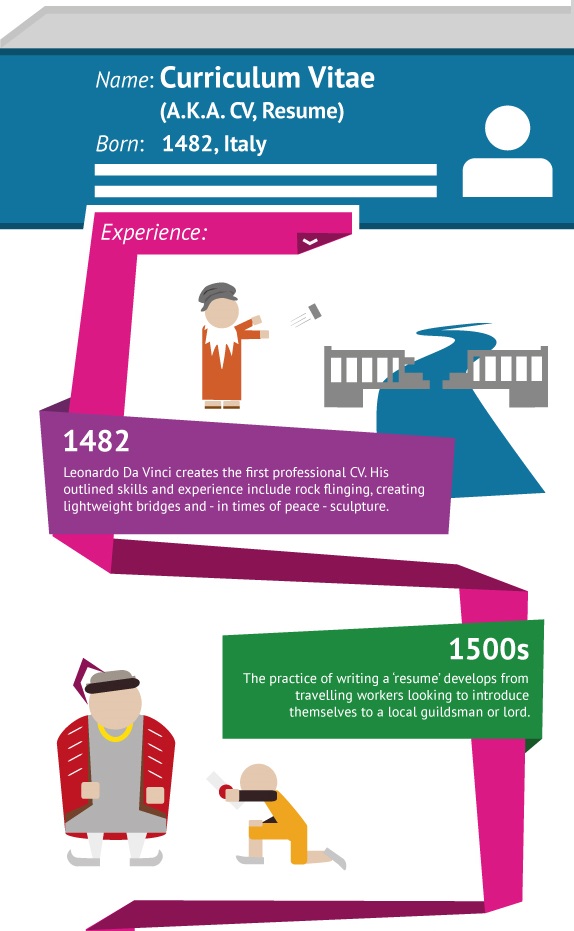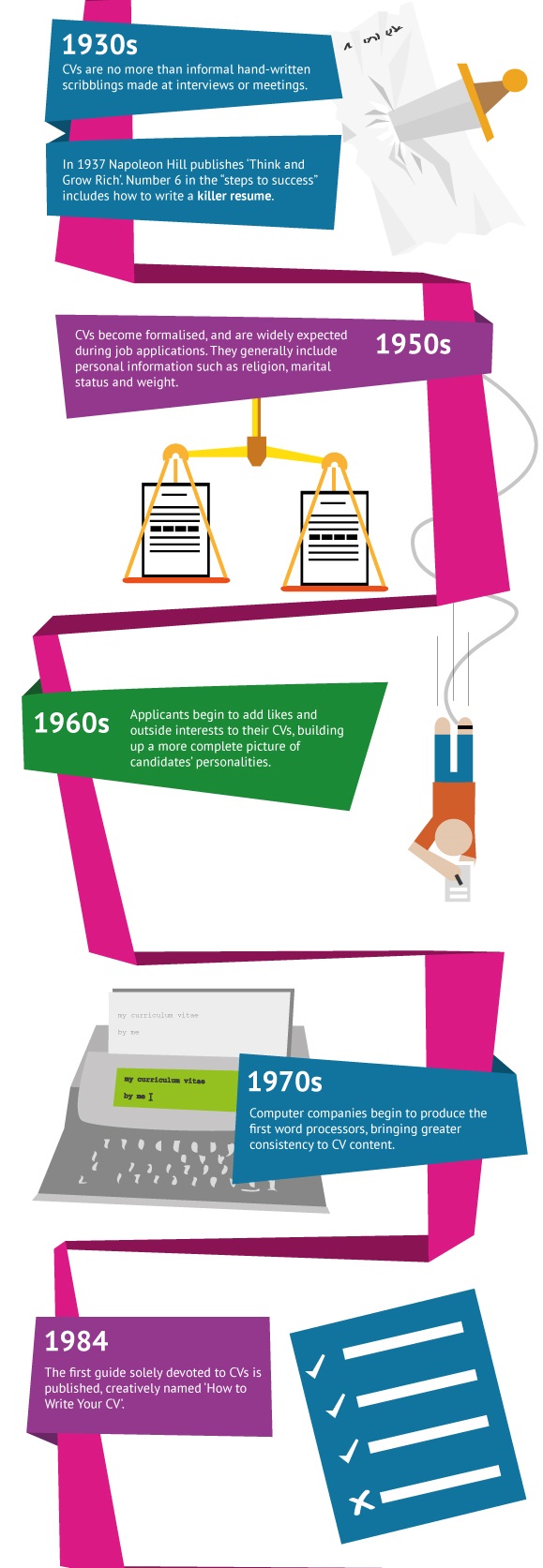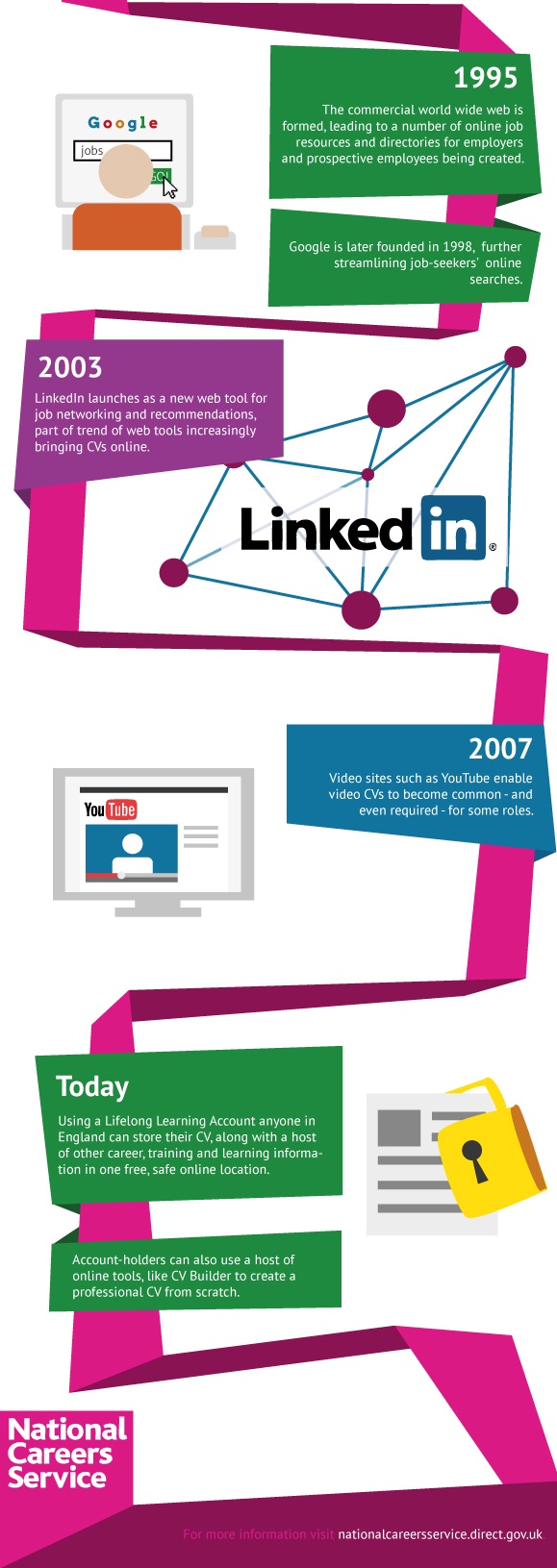
CV Writing History
Apr 29 2016

This article has the intention to inform you about the background story of a resume building services or common used word CV; according to the etymology of the word CV, meaning “curricula vitae” which is translated from Latin as “Courses of Life”.
You must be thinking; why is this knowledge so important to have? Well, according to studies we perform better and adapt properly to circumstances when we know the reasons behind a situation. In this case; while you are looking for a job, you should know all the things around it. Like for example: why do you need to write or buy CV online? What does a CV contain? Can you have many CVs? Are all the CVs the same? What exactly a CV writing service is?
Back in the days, working was just for the lower class and most of the jobs weren’t considered honorable enough for a noble to do, since working was just for the poor. In that time, people used to get recommended only and having a CV wasn’t a thing. Then Art and science started developing faster than expected and these new geniuses got into the need of benefactors to support their investigations and scientific projects, which were consequently for the nobility with power to help and money to spend.
One of these geniuses was Leonardo Da Vinci who is documented in history as to be the first person who put his abilities and talents down in a paper for Ludovico il Moro Duke of Milan, his future patron in 1482. In Leonardo Da Vinci’s handwritten resume, we can read his abilities to perform in full explanatory paragraphs of himself as traits of personality in a mix of characteristics with a number for each one of them.

Later it became a common practice; where people used to write their “professional” experiences and show off how well they could express themselves in a narrative poetic manner, since being literate was also not for everyone.
When time passed and immigration (or call it colonization if you prefer…) started to happen from Europe to America and vice versa in 1500s; people used to have the opportunity just to show their skills right away in a trial period of labor condition without passing through an interview process; it was more like a healthy appearance selection (not so fair if you were sick/pale of starving because you didn’t have a job…) and the ones with more luck could have an “introduction” letter to acquaintances. This was a double-edged sword, it might look like an advantage if the person was very confident on their skills and well prepared to handle rough situations and stress, but if the person were new at the activity and freaked out then it could play against; and part of the CV were the recommendations and alliances. Meaning; who’s your father, mother, grandfather, cousin, sister, brother, best friend, benefactor, etc… if you were well connected then you had more chances to get the job even if not qualified. Luckily this has changed (or not…don’t get discouraged!). Recommendations and alliances were more like an extended document to your birth certificate with proper seals and authenticated signatures. All recommendation letters were the most important things in a CV since it proved the existence of your past (courses) to be true as you said it to be, either from education background and/or experiences such as now. Some of these recommendation letters were sent directly to the new possible employer and weren’t handed into any people’s hands.
In fact in the 1930s, the CVs were written with the employer directly just to have you on file inside the company’s formalities and most of the time people were already employed but the files gave access to authorities above inside the company when they needed to elevate the standards or to fire someone.

Also before, you could live your entire life by doing one professional activity only, but now since technology has developed with the first typewriter, you are required to perform as much as possible and transform yourself into ten-professional-activities and make it into one ‘career’, because later in time as far as the 1940s the CV used to contain more personal information than what we call ‘professional’, such as your height and custom measures. If you ever had a Myspace profile, then you know what kind of information was there. And this takes us to the CV in question. By 1950s this was already part of the job hunting procedure and you were expected to have it ready before hand. It also saved time to employers when choosing the ‘right’ candidate since they could read it all in a piece of paper, and selection was expected to be more accurate than before. All of this was/is part of Human Resources purposes as we know it now. Later in time, employers started asking for more information such as sports and extra interests to see the affiliation within the company and to see how well they could represent them.
Now, there are so many things to learn because you are doing the job of three people at minimum comparing to your parents’ and grandparents’ golden days… and the competition keeps on growing. Before you could be a happy secretary because you were able to write fast; later people needed to learn how to typewrite, assist, personalize letters, have organizational skills, manage agenda, improve accounting resources, and so on. Now, a secretary is like an extension of the boss/ person she/he is working to; the employer is almost useless without the secretary or assistant (I’m sure you noticed). So in a secretary’s CV, we find throughout the times their exposure of qualifications has changed according to the Age we are living.
Therefore, knowing how to put the relevant information together requires some rocket science abilities (sometimes), meaning that a professional resume writer has studied the pros and cons of sharing all the specific information regarding the job in question.

What about the CV evolution in the new era? Computers, internet, etc. Back in the 90s, people used to check their e-mails once a month/week or something like that… then once a day… and in that progress, we also changed the ways of sending information and job application procedure.
Digital formularies and online job hunting now is a common thing, but if you aren’t familiar with the evolution; you might get entirely lost in it and struggle with the recruitment process as most people do.
As in the background history of the CV, you need to point out your abilities in a creative way, although nowadays the mechanics of it had changed. Alliances aren’t tings to share anymore in paper since it looks like an imposition of social status; although is well advised to share such information during the interview if you find it useful at the moment as well in a very subtle way.
Having all this in your brain ready to process brings us to the idea of:
How many CVs can you have?
Well, if you are a versed qualified person with plenty of different experiences and aleatory expertise and interests, then is well advised to have different CVs were you can expose all of it ‘organized’ and divided into sectors. But also is good to have one entire resume with all the information and categorized it into a wide sector selection. A resume consultant can help you identify each one of these sources to achieve the best results. Once this is ready, you can apply to all the different jobs that you think to be qualified and interest you the most. Just as Leonardo Da Vinci, maybe you are an artist and scientist… as well as a theorist or developer.
Never the less, keep on learning and enjoy the experience process!


